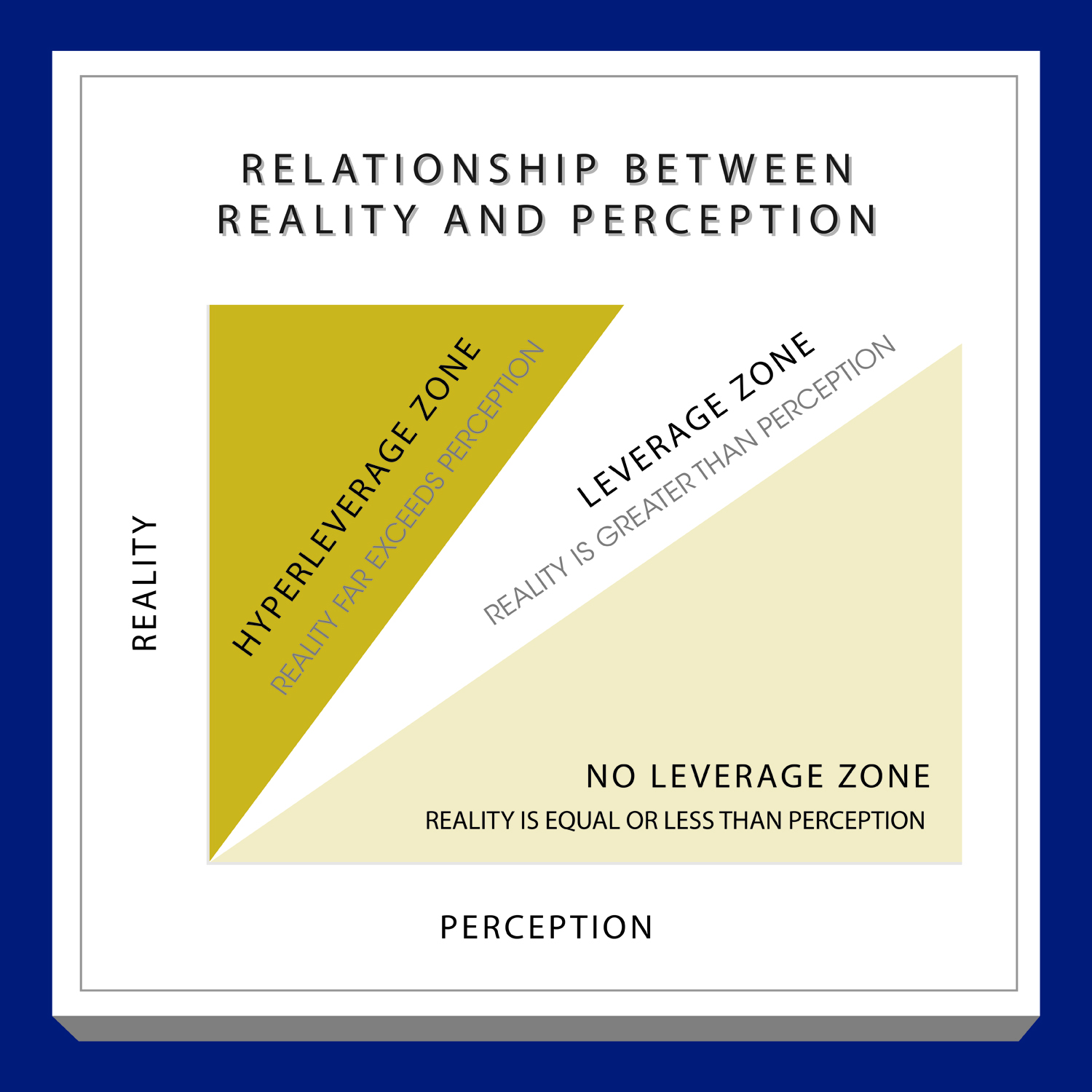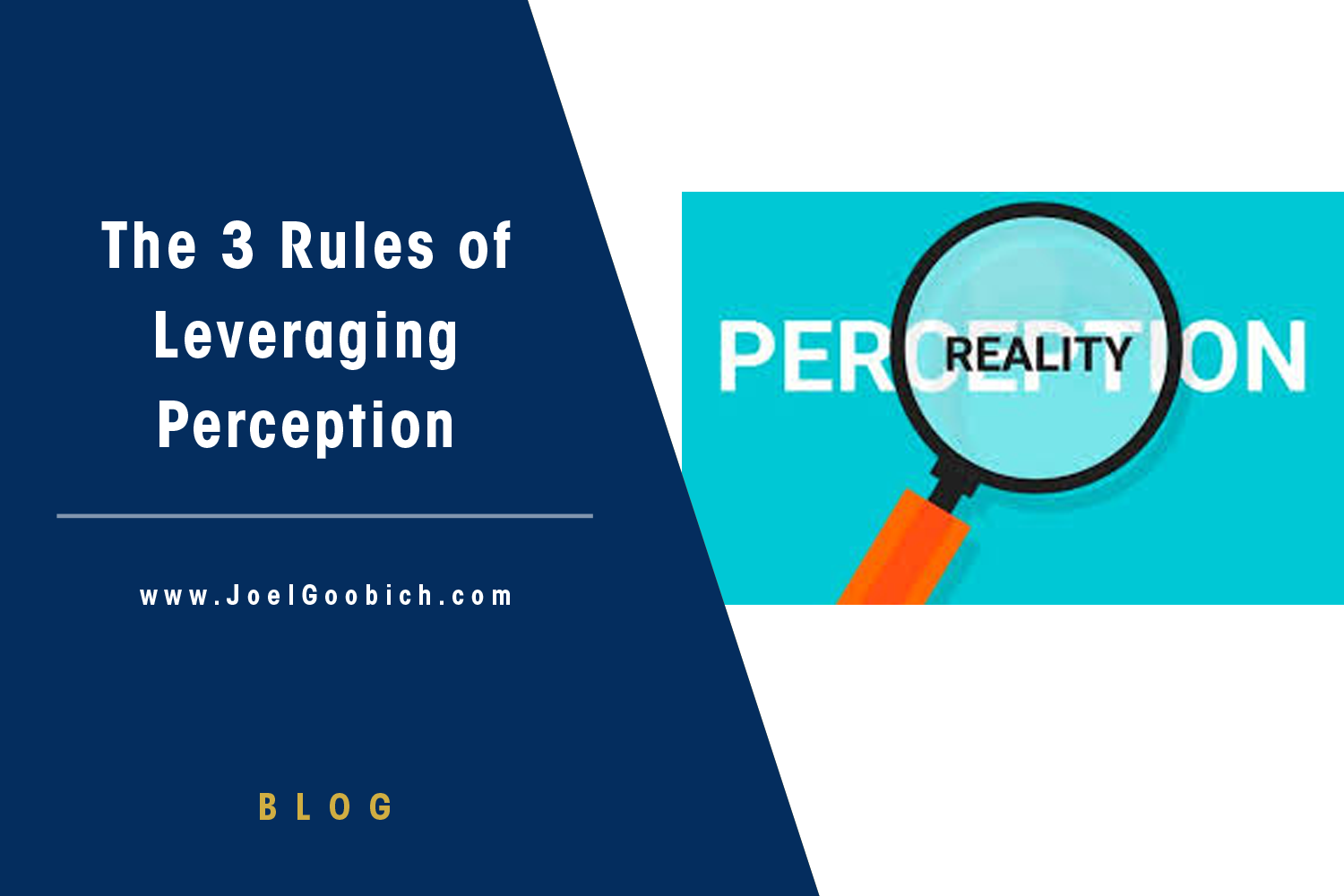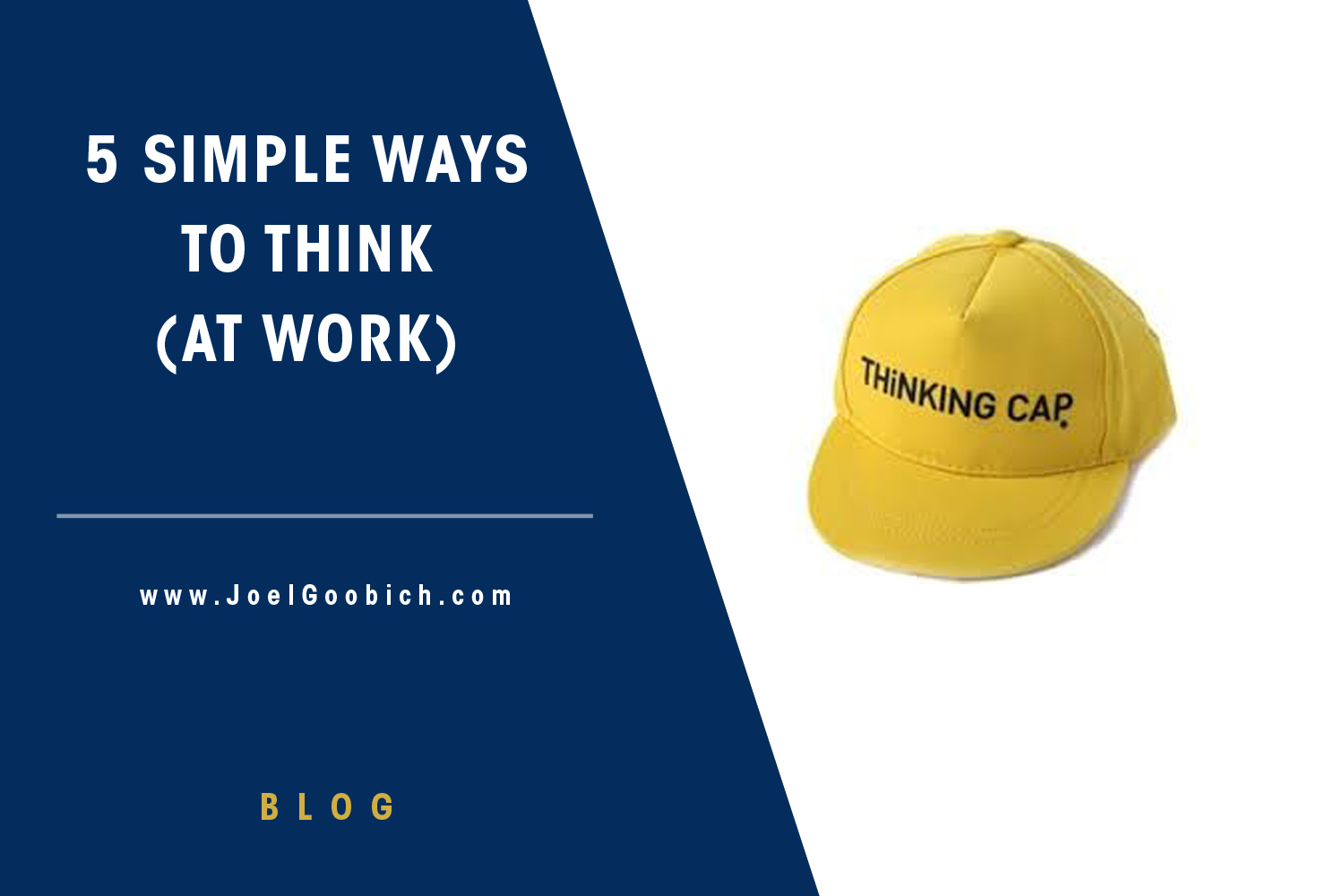The 3 Rules of Leveraging Perception
We often make decisions, act on information and align our thoughts based on an initial impressions, gut feeling or perception of reality. We must be aware though that perception can be manipulated, controlled and even changed. Leveraging Perception is a powerful tool that can wield phenomenal results for both good and bad.
Perception can be leveraged. Reality is more difficult to.
Leveraging perception is vital to the entire marketing and advertising universe. And unfortunately leveraging perception has become a constant and some claim a necessary feature of politics as well. It’s why telling a good story that a target audience can relate to, whether it’s aspirational or directly solves a current problem, is so incredibly powerful . Stories communicate perception in a way that our brains perceive as real. And since we tend to make initial and even final decisions based on our perception, this can easily be manipulated.
Poker – The Ultimate Game of Perception
Take the game of poker. It’s the ultimate game of perception over reality. One does not reveal all of one’s cards, leaving the opponents to guess what the other players hold in their hand. How one wagers, how one reacts to the flow of the game, how one decides on how many cards to discard provides a perception about the strength of the players hand. It doesn’t have to reflect reality though to win at poker.
A player with a good ‘poker face’ can mask their emotions when dealt a bad hand. A poker face can hide the fact that the cards in his hand are really strong at all. A good player can leverage perception and use it to multiply their winnings. Bluffing and increasing the wagers so that others might conclude that it is too risky or expensive to continue to ante into the pot. A good player controls their ‘tells’ so that they don’t reveal the reality too soon. (I love the scene below from the movie Rounders – the best poker movie ever made – where Matt Damon recognizes John Malkovich’s tell and leverages it to his advantage)
The Three Equations of Leveraging Perception
The relationship between a business and its customers should not be like a poker game. Trying to create a perception of quality, performance and added-value for a company’s products should not be removed from reality. After all, most businesses are in it for the long term and would want to create a positive and lasting relationship with their customers. At least that is what is accepted wisdom.
I contend that there are only three equations that matter when it comes to leveraging perception. These equations may seem simplistic, but at their core they concisely incapsulate our behavior tendencies and correlate well to our more rational thought processes. The three equations are rules of the road by which businesses should align their marketing and products to for optimum results.
Rule #1 – If a customer’s perception (expectation) is greater than the reality they experience when using your product or service then there is no opportunity for leverage. The customer will feel that they got less than what was expected.
Rule #2 – If a customer’s perception (expectation) is equal to the reality they experience when using your product or service then there is limited opportunity for leverage. Essentially the customer got what they expected.
Rule #3 – If a customer’s reality is greater than what they expected then there is an opportunity to leverage this positive experience. The customer has gotten more than expected.
Corollary to Rule #3
A company that proactively makes sure its customer’s reality far exceeds what they expected and is absolutely delighted has attained a position of HyperLeverage.
The above rules can be readily grasped in the following diagram.

You Have One Opportunity
The thing about perception is that rarely do you get another chance in a competitive business environment to change it. First impressions matter. It is costly and time consuming to communicate information later on that may or may not alter that initial perception.
The first impression can be the perception that lasts forever. Make sure it’s a good one.
You really only have one chance to at least adhere to Rule #2 and strive to achieve Rule #3. It’s more often than not the kiss of death to have a customer’s experience follow Rule #1.
Where does this all lead to? It’s quite simple. To grow a business you need at a minimum to meet and usually exceed the perception and expectations of your customers and target audience. With the ubiquity of customer reviews, social media influencers and ability to instantaneously compare products and services, the bar for success in a globally and internet based economy is much higher than ever before.
To kick growth into overdrive you have to proactively and purposefully deliver more than what is expected. It’s that extra effort that puts you in HyperLeverage mode.






